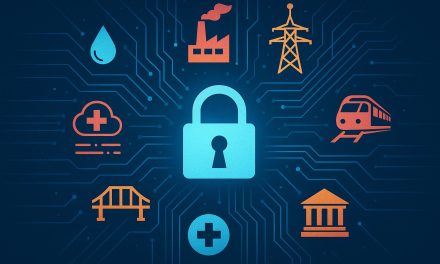When most people think of the Bipartisan Infrastructure Law (IIJA), they picture roads, bridges, maybe even broadband expansion. But behind the headlines and ribbon-cuttings, something far less visible but just as critical happened: the federal government quietly made the largest cybersecurity investment in U.S. history.
And most people in IT barely noticed.
This isn’t just about compliance checkboxes or theoretical risks. We’re talking about real money, real programs, and real transformation in how critical infrastructure—and even small local governments—approach cyber defense.
Let’s break down how the IIJA changed cybersecurity in the U.S., and why you should care even if you don’t work in government.
Key Cybersecurity Programs Funded by the IIJA
Yep, $2 billion+. That’s what the IIJA allocated specifically for cybersecurity.
Here’s where some of that money went:
- $1 billion: State and Local Cybersecurity Grant Program (SLCGP), managed by FEMA and CISA. This funds everything from MFA rollouts to incident response plans in city halls and counties.
- $100 million: Cyber Response and Recovery Fund, for when “uh oh” turns into “call the feds.”
- $250 million: Cybersecurity grants and technical assistance for rural and municipal utilities (think local energy co-ops).
- $250 million+: R&D in cybersecurity for the energy sector, including protecting the grid.
- Tens of billions more in sectors like water, transportation, and healthcare, where cybersecurity is now an eligible infrastructure investment.
If you work in or with any public agency or utility, odds are your environment may be impacted by one or more of these.
Learn more at CISA’s SLCGP page.
From Optional to Expected: New Cybersecurity Requirements in Infrastructure
This wasn’t just a cash dump. The IIJA shifted expectations. For years, cybersecurity in critical infrastructure was mostly voluntary—do it if you can, if you want, if your budget allows.
Not anymore.
The IIJA, alongside EO 14028 and the National Cybersecurity Strategy, turned cybersecurity into a baseline requirement for modern infrastructure projects. If you want federal dollars, you better show you’re serious about:
- Zero Trust architectures
- Securing operational technology (OT)
- MFA and strong identity controls
- Incident response plans
- Vendor risk and SBOMs (software bills of materials)
This means that state CIOs, city IT teams, and even utilities need to step up. And for many of them, it’s their first time dealing with these standards.
Explore the National Cybersecurity Strategy.
Implications for Private Sector IT and Cybersecurity Strategy
Even if you’re in a private company, this matters. Why?
- Your suppliers, clients, or data partners may be under these new rules.
- Grant-funded projects often create ripples: contractors, integrators, MSPs all need to meet the cybersecurity bar.
- The bar is rising across the board. What public sector does today, the private sector is expected to match tomorrow.
Also: many of the tools, playbooks, and frameworks being rolled out (NIST CSF, CISA guides, Zero Trust roadmaps) are public and reusable. If a small-town water utility can start implementing Zero Trust with federal funding, so can your org.
Check out CISA’s Zero Trust Maturity Model.
Cybersecurity is Infrastructure Now
In 2020, you could argue cybersecurity was a tech problem.
In 2024, it’s an infrastructure problem.
If you’re not budgeting, planning, or architecting with cyber in mind, you’re behind. The IIJA didn’t just fund roads and bridges. It put cybersecurity on the same level as concrete and steel.
If you’re in IT and you haven’t read the cybersecurity side of the infrastructure bill, you’re missing the part that affects your job, not just the DOT’s.
Want practical breakdowns like this in your inbox? Subscribe to ITGuru365 and get real-world IT strategy from someone who lives in the stack.






Comments